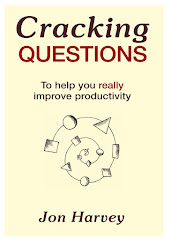The scenario can, however, sometimes go like this: a horseshoe group gathers round a flip chart and launches into brainstorming the four headings in a random order. There is usually a discussion along the lines of “is that an opportunity or a threat?” to which someone else will say “well it could be both – let’s put it in both sections”. And then someone else will say “yes, but, isn’t that one of our weaknesses too?” to which the reply will be “put it there as well”. And then there will be a further ‘off piste’ (i.e. not brainstorming) discussion about that weakness about how it has been around for so long and every time we do one of these SWOT discussions it comes up and nothing changes and how life is ultimately so depressing and why are we bothering with this SWOT brainstorming anyway and can we talk about something else...?
Have you been in one of those discussions?
One of the reasons, I suspect, why the approach has been often misused is that the original source has been lost. Albert Humphrey of Stanford University is often credited with inventing the term (see http://en.wikipedia.org/wiki/SWOT_analysis) but others suggest that there is “no documented history of SWOT – that is the answer!” (http://www.marketingteacher.com/swot/history-of-swot.html). Whatever is the case, the net and literature are full of ‘how to’ methods for conducting a SWOT analysis (http://www.coursework4you.co.uk/essays-and-dissertations/swot-analysis.php and http://www.mindtools.com/pages/article/newTMC_05.htm for example).
I happen to think that because SWOT has been badly used for so long by so many people that we are in danger of overlooking just how useful a SWOT analysis can be. Perhaps it is time to straighten out the screwdriver that you once used to open a can of paint – and use this tool well. At risk of creating yet another ‘how to’ blog on the use of SWOT analysis, here are some guidelines that should help you to make the most of this tool:
- Recognise that a good SWOT analysis requires careful deliberation and is not something to squeeze in as a good ‘filler’ before the real highlight of the away day (i.e. lunch). If you want to make the most of a SWOT analysis, start with being in the right frame of mind and give it enough time.
- Make sure you have the best possible mix of people present: people with insight, concern and authority in varying mixtures usually works well.
- Define your scope carefully at the beginning. Describe and delineate the project / team / organisation (p/t/o) about which you are conducting the SWOT so that everyone knows what is ‘internal’ and what is ‘external’. Also remind people of the objectives of the project / team / organisation so that all are starting with the same song sheet.
- Define your terms rigorously at the beginning as well. Here are mine:
- an opportunity is an external factor or force that is or has the potential to assist or enable the p/t/o achieve its objectives
- a threat is an external factor or force that is or has the potential to hinder or disable the p/t/o achieve its objectives
- a weakness is an internal feature of the p/t/o that is either inhibiting the p/t/o from making the most of the external opportunities or mitigating the external threats
- a strength is an internal feature of the p/t/o that is either allowing the p/t/o to make the most of the external opportunities or to mitigate the external threats
- Note that strengths and weaknesses are defined relative to the external opportunities and threats. The implication of this is in a SWOT analysis, is that you start ‘out there’ with opportunities and threats. Then you identify the strengths and weaknesses in this context. Something might be strength one year and bit a weakness the next because the context has changed. This point, in my view, is critical in understanding how to make the most of SWOT analyses. This is why some people call them TOWS analyses (although I prefer OTSW as jars more and is therefore remembered more, perhaps).
- Good analysis starts with a good brainstorm, in my experience. This means allowing people, with all of the above in mind, to freewheel, connect, say whatever comes into their heads, not critique or discuss, and get out a large volume of ideas. (I think sticky notelets can be useful as you can move them around later.)
- One shape on which to place the ideas, which emphasises the points above is this:
- Using the ‘STEEPLE’ mnemonic may help with stimulating ideas for the outer ring (social / sociological, technical / technological, economic, environmental, political / Political, legal and ethical) and McKinsey’s 7S model to consider the inner one (strategy, structure, systems, skills, style, staff & shared values)
If these guidelines are new to you, please try them out and let me know how they work.
What other guidelines would you suggest (or delete)?
What other guidelines would you suggest (or delete)?









.jpg)



No comments:
Post a Comment